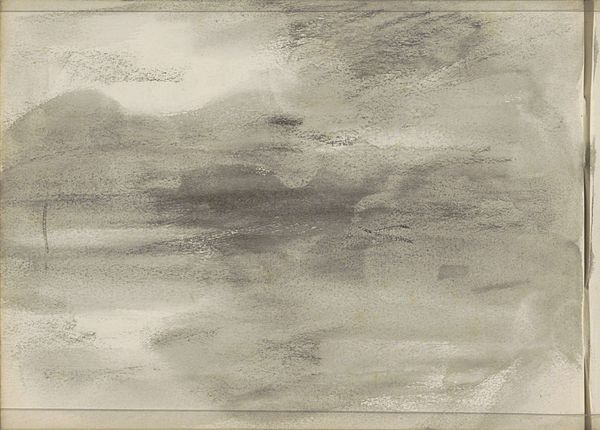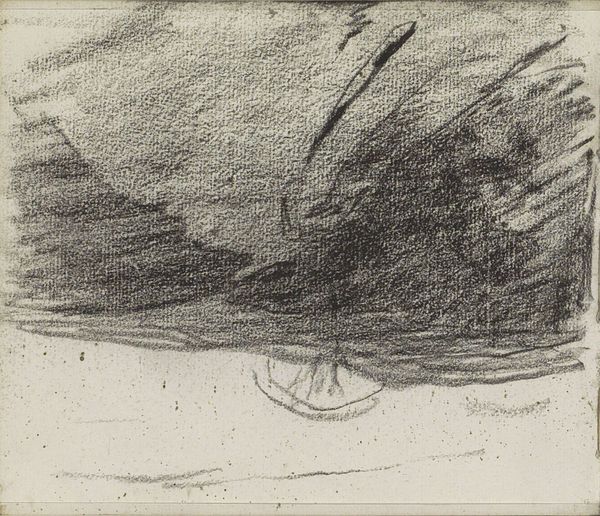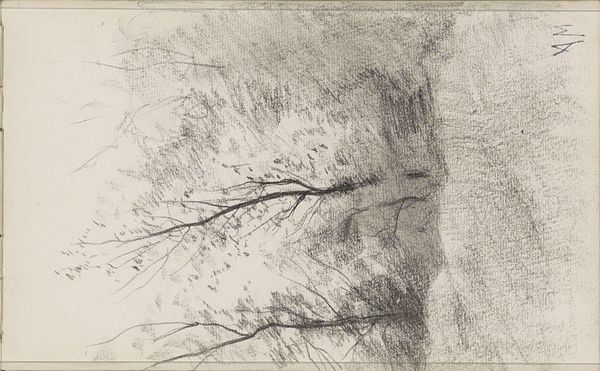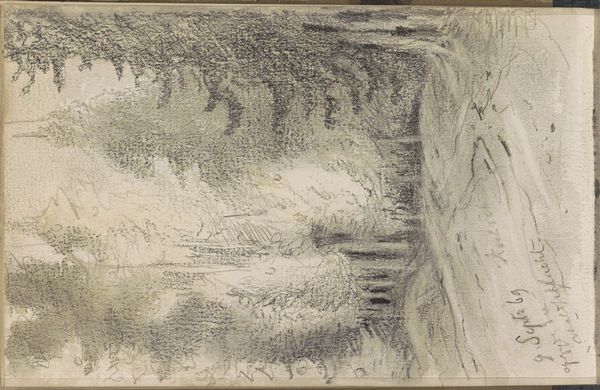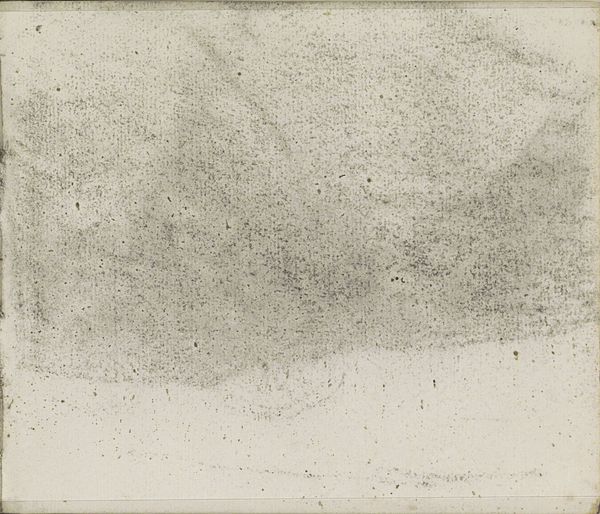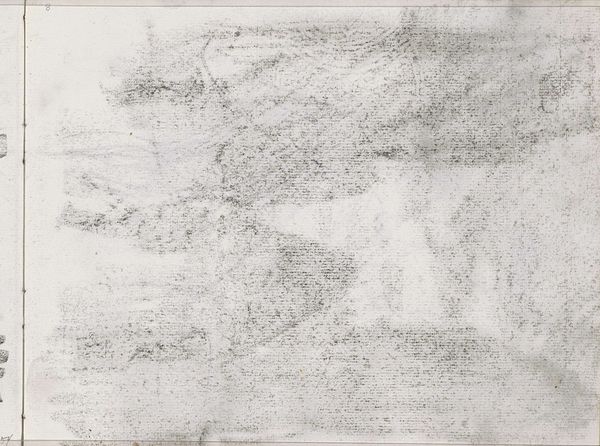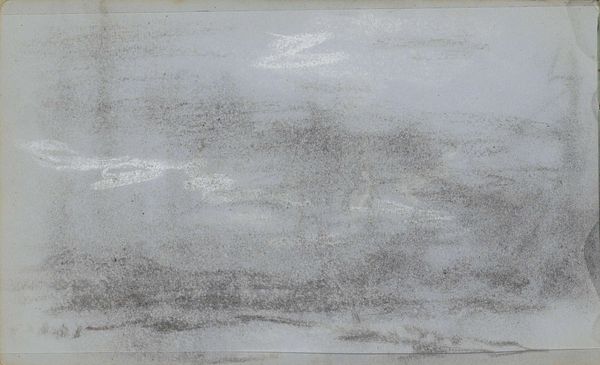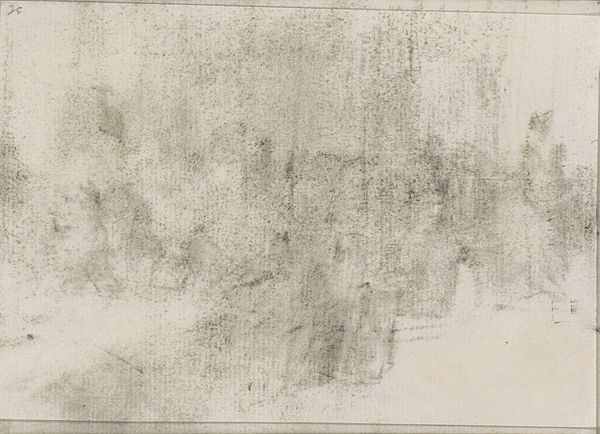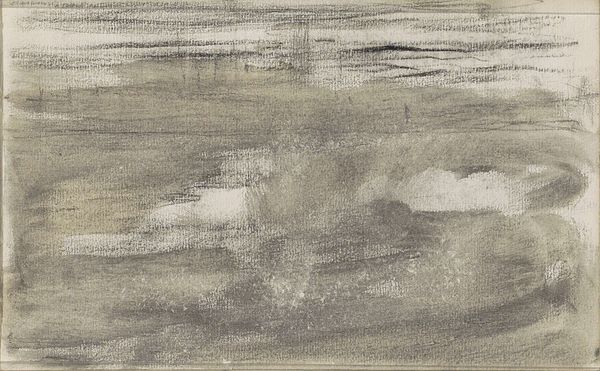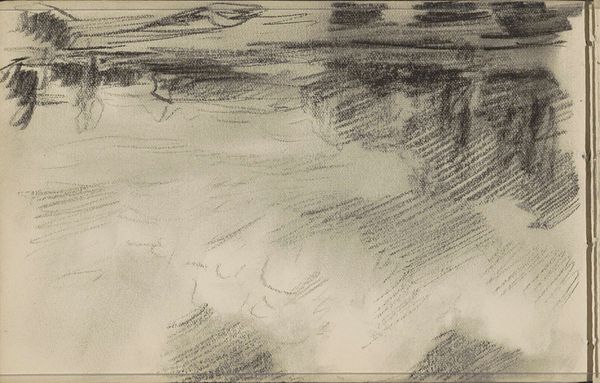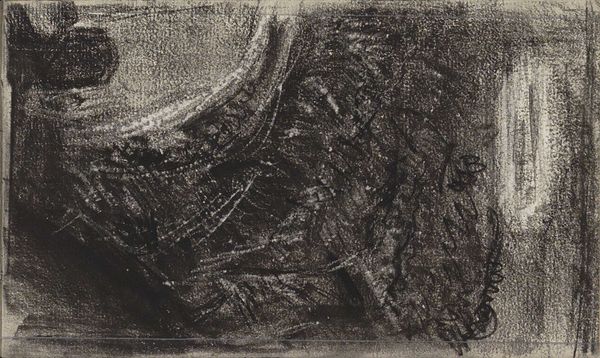
drawing, graphite
#
drawing
#
impressionism
#
landscape
#
graphite
#
realism
Copyright: Rijks Museum: Open Domain
Curator: Let’s take a look at Anton Mauve’s "Heuvellandschap," a graphite drawing made sometime between 1848 and 1888. It is currently held here at the Rijksmuseum. Editor: There's a somber quality that washes over me. It feels both raw and ethereal, almost like a charcoal lament etched onto the page. Curator: The artist has chosen graphite to depict this landscape; the subtle gradations of light and shadow contribute significantly to its overall mood. Notice the contrast between the dark, expressive strokes of the sky and the lighter, more delicate touches in the fields below. Editor: I'm struck by the turbulence. The sky appears weighted, almost pressing down on the land. Considering this was a time of significant socio-political shifts in Europe, one can’t help but view the burdened sky as indicative of a populace undergoing similarly tumultuous times, caught between industrial progress and societal conservatism. Do you feel the weight, too? Curator: It is a valid interpretation. However, if you analyze it merely from a structural standpoint, you'll notice the deliberate choices in composition. Mauve manipulates visual weight to draw your eye to the horizon line, which effectively divides the image and creates a sense of depth within this very minimal and rather small work. Editor: Still, it is impossible to divorce any art from the time of its making. This work’s very starkness, its unyielding greyscale tonality, screams of the social realism seeping into the consciousness of late nineteenth-century art. Curator: But can't the inherent qualities speak for themselves? Mauve’s masterful ability to create depth through varying the densities of the graphite markings remains potent regardless of time. Editor: Indeed, technique is important, but ignoring the cultural landscape limits how well we see it. This is about land but more importantly, labor. The unadorned earth reveals both the burden and the bare dignity of rural life at that time. Curator: Fair enough. Seeing both elements seems crucial. Editor: Exactly, and perhaps by acknowledging the societal burden we are better equipped to examine it as just a really beautiful work of art.
Comments
No comments
Be the first to comment and join the conversation on the ultimate creative platform.
